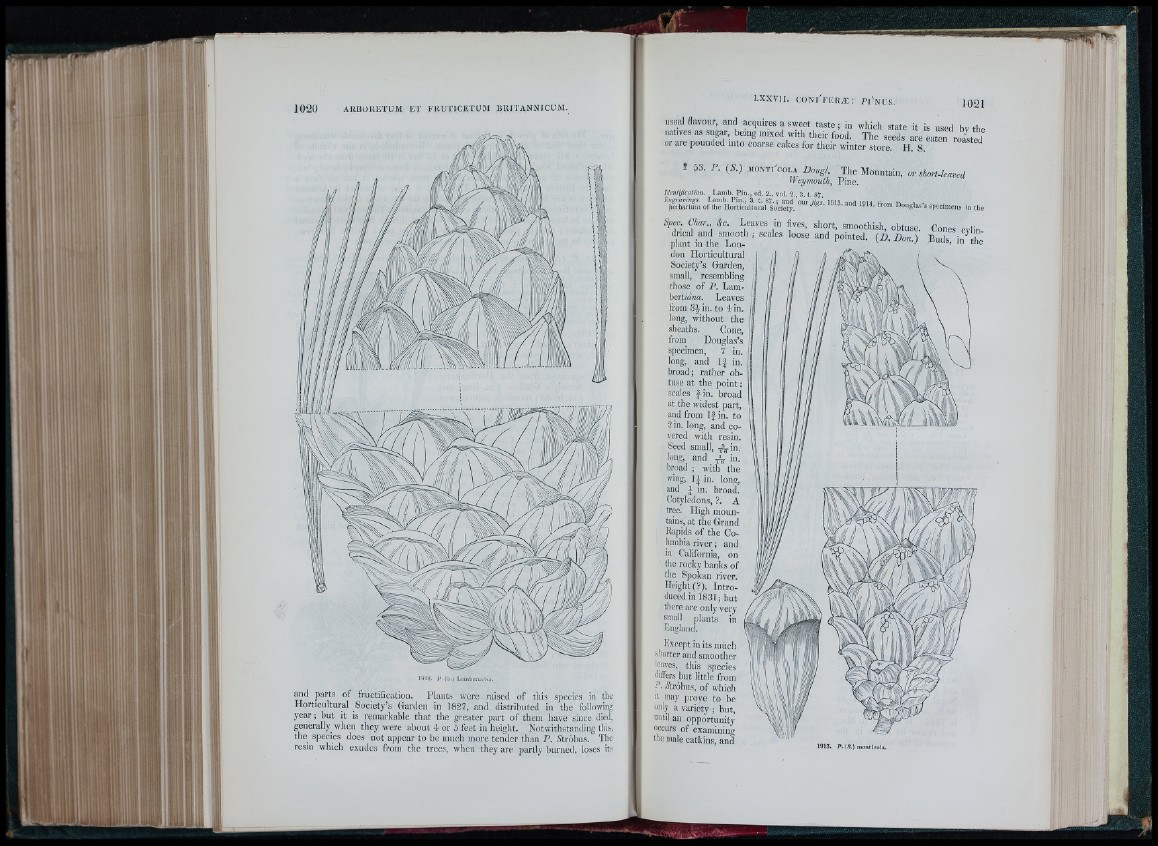
1912. P. (a.) Laiiibt'lti.
and parts of fructification. Plants w^ere raised of this species in the
Horticultural Society’s Garden in 1827, and distributed in the following
year; but it is remarkable that the greater part of them have since dieii,
generally when they were about 4 or 5 feet in height. Notwithstanding this,
the species does not appear to be much more tender than F. ¿trbbus. The
resin which exudes from thc trees, when they are partly burned, loses its
1021
usialflavom, and acquires a sweet taste; in which state it is used bv the
natives as sugar, being mixed with their food. Tlie seeds are L e n roasted
or are pounded into coarse calces for their winter store. H. S. roasted.
1 53. P. (S .) MONTI'COLA D„«gL The Mountain, or shori-lcavcd
Weymouth, Pine.
Identification. Lamb. Pin., ed. 2., vol 2 3 t 87
f r S I S " to “ «■" Dovgla/ft spacl,ne„s In tl,e
Spec. Char f r . Leaves in fives, short, smoothish, obtuse. Cones cvlin
p tta ¡ r th eT r in ' “ " Buds,teteffie'
don Horticultural
Society’s Garden,
small, resembling
those of P. Lam-
bert/ana. Leaves
from 3^in. to 4 in.
long, without the
sheaths. Cone,
from Douglas’s
specimen, 7 in.
long, and I f in.
broad; rather obtuse
at the point:
scales fin. broad
at the widest part,
and from Ifin . to
2 in. long, and covered
with resin.
Seed small, ^g-in.
long, and ^ in.
broad ; with the
wing, Ifin. long,
and f in. broad.
Cotyledons, ?. A
tree. High mountains,
at the Grand
Kapids of the Columbia
river; and
in California, on
the rocky banks of
the Spokan river.
Height (?). Introduced
in 1831; but
there are only very
small plants in
Lngland.
Except in its much
shorter and smoother
'Caves, this species
(hffers but little from
E- ¿trobu.'i, of which
It may prove to be
only a variety ; but,
until an opportunity
occurs of examining
the male catkins, and
1913. P . (S.) tnontiooU.